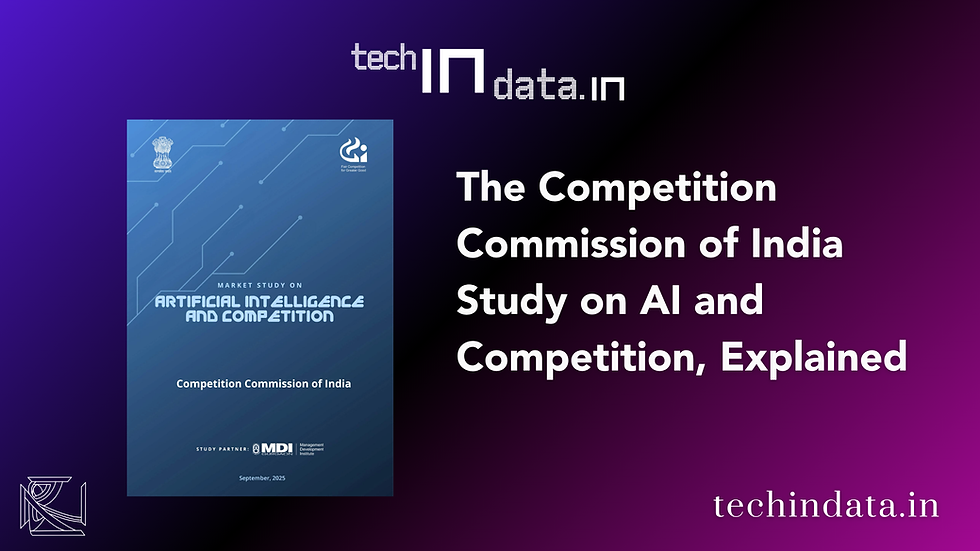A Tech Paper on AI Output Preferences validates our AIInventorship.com Handbook
- Abhivardhan

- Oct 22
- 3 min read

I have said this to all my co-authors, including Kailash Chauhan and Bhavana J, when we co-authored one of the rarest AI inventorship handbooks from India, ever:
"Striving for excellence matters. Stay humble, build the foundations, then let the river flow."
What happened exactly?
Tuhin Chakraborty, P. Dhillion and Jane Ginsburg from Stony Brook University, Columbia Law School and University of Michigan respectively published a crucial paper on AI and market harms, from a copyright and AI angle (check the paper at https://www.arxiv.org/abs/2510.13939).
And that paper validates AIinventorship.com, Indic Pacific's Global AI Inventorship Handbook. :D
How exactly? Are we hyping AIinventorship.com? No.
1️⃣ The speed and scale of LLMs to produce generative content causes market risks. We all knew that, but the paper proposed that and proved it.
2️⃣ Great, but in what context? Creating artificial competition for authors who developed their content using LLMs considering their technical capabilities creates market clarity and trust dilution - and that is a competition policy problem lol.
3️⃣ Expert human writers were recruited for this research to emulate the style/voice of 50 diverse award-winning authors - which were then paired with human-written excerpts with AI-written ones and had 150+ expert and lay readers evaluate them blindly.
Result: Both Human & AI received the same In-context prompt making it an apples-to-apples comparison.
4️⃣ However, fine-tuning #ChatGPT on individual authors’ complete works showed something: Experts now favoured AI-generated text for stylistic fidelity (OR=8.16) and writing quality (OR=1.87), with lay readers showing similar shifts.
Why This Research Validates Our Handbook 😉
When we published The Global AI Inventorship Handbook (June 2025), we warned this was coming. Now we have empirical proof.
Chapter 2 on Convergence of Patent and Copyright Laws on AI had estimated that LLMs would cause "market dilution" by "flooding the market and causing more competition for sales of an author's works." The research confirms this with $81 per author cost—a 99.7% reduction that makes displacement economically inevitable.
Chapter 2's "Cross-Domain Legal Contamination" framework explained how companies face contradictory legal positions. The research validates this: fine-tuned outputs evade detection 97% of the time (3% detection rate vs. 97% for in-context prompting), creating legally invisible competition—exactly the "artificial competition" problem we identified.
The Introduction had stated that 54,000 GenAI patents filed while "legal infrastructure remains fundamentally misaligned." The research's guardrail recommendations echo our call for improved subject matter eligibility standards and data governance frameworks (Chapter 6).
Cross-Domain Legal Contamination Confirmed
The handbook introduced the concept of "Cross-Domain Legal Contamination," explaining how "patent and copyright jurisprudence are experiencing mutual contamination where legal theories and precedents bleed across domains." The authors warned that "companies developing AI systems cannot maintain contradictory legal positions where their patent applications claim AI innovations are novel and non-obvious" while "their copyright defenses argue AI training is merely transformative pattern recognition."
The Chakrabarty research validates this framework through detection rates. Fine-tuned outputs were flagged as AI-generated only 3% of the time compared to 97% for in-context prompting by state-of-the-art AI detectors like Pangram Labs. This creates what the handbook called "legally invisible competition"—AI-generated content that evades both detection systems and traditional copyright frameworks.
Bottom line: Our handbook mapped the legal framework. This research proves it's happening at scale, right now.
Pattern Extraction and the Decompression Problem
Chapter 2's section on "Pattern Extraction and the Decompression Problem" argued that "AI systems convert expressive content into mathematical abstractions that capture statistical relationships rather than protected expression." The handbook explained this operates "at the precise boundary between copyrightable expression and uncopyrightable ideas, procedures, and systems."
The research's mediation analysis confirms this mechanism: "fine-tuning eliminates detectable AI stylistic quirks (e.g., cliche density) that penalize in-context outputs." This validates the handbook's assertion that "when AI outputs resemble training data, courts must distinguish between statistical coincidence and expressive copying."
Trade Secrets as the Last Resort
Chapter 3 explored "Trade secrets as an alternative to patent protection," noting that "due to the conventional questions surrounding the human-inventor conundrum, a viable method of AI intellectual property protection is trade secret protection." The research validates this prediction: at $81 per author with 99.7% cost reduction, the competitive advantage lies not in patented processes but in proprietary training datasets and fine-tuning methodologies that remain trade secrets.
Now go, read it. Get the Global AI Inventorship Handbook now, on indopacific.app.


.png)



Comments